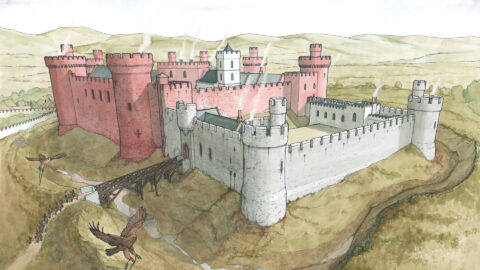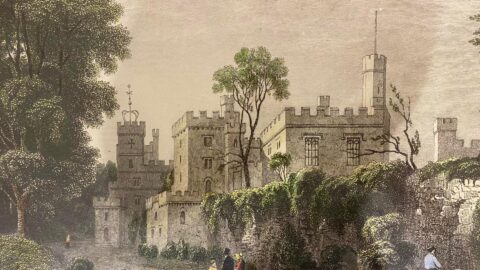16th - 17th Century
RUTHIN CASTLE HISTORY
The de Grey connection with the castle ended with George de Grey, 5th Baron of Ruthin & 2nd Earl of Kent. After the death of his father, he sold the castle in 1508 to Henry VII from whom it passed to King Henry VIII. Henry VIII was connected to the castle in more than one way.
Ida de Grey (1368 – 1426), also known as Edith de Grey, was born in Ruthin Castle & was the daughter of Reginald Grey, 2nd Baron Grey de Ruthyn, one of the most powerful Welsh Marcher lords of his time.
Ida married Sir John Cockayne, Chief Baron of the Exchequer by whom she had six children. Through her eldest daughter Elizabeth, she was an ancestress (predecessor) of Anne Boleyn, Jane Seymour, & Catherine Howard, all Queens Consort of Henry VIII. Henry granted use of the castle to his bastard son, Henry Fitzroy, & after his early demise, to Ambrose Dudley, Earl of Warwick (apparently a great man with deep affection for the Welsh and their culture).
Ruthin Castle then passed from Henry VIII to Edward VI & briefly, at least in theory, to Lady Jane Grey. Lady Jane Grey (1536/1537 – 12 February 1554), also known as The Nine Days’ Queen, was a descendant of Reginald Grey, 3rd Baron Grey de Ruthyn (c. 1362 – 1440). A young English noblewoman who occupied the English throne from 10 – 19 July 1553 she was executed for high treason when allegiances changed. A great-granddaughter of Henry VII by his younger daughter Mary, Jane was a first-cousin-once-removed of Edward VI.
Mary I (Bloody Mary) quickly succeeded Lady Jane Grey, & from her the castle passed to Elizabeth I, James I & the final royal owner, Charles I.


In 1632, King Charles I was forced to search for new sources of revenue as there was a depreciation of the coinage in the country. The castle & estate, which had been poorly maintained, was sold to Sir Thomas Myddleton of Chirk.
A survey stated that the castle was ‘not worth quarrying for its stone as the original quarries were easier to work’ & the gatehouse had ‘a decayed roof of slate and including the wooden joists, doors and hinges it was valued at not more than 5 pounds’.
In 1642, however, the English Civil War caused the quick repair of the castle at the Crown’s expense & it was garrisoned against the Parliamentarians. Four years later in 1646, Parliamentary forces under the command of Major-General Mytton were given the task of reducing the castles of North Wales & their first target was Ruthin.
The castle withstood an eleven week siege during which the walls were massively attacked with artillery. The defenders surrendered only when the attacking forces announced their intention to mine the walls. In 1648 the castle was partially dismantled after an act of Parliament was passed to stop the re-occupation of fortresses by hostile forces. The walls were torn down with the timber & stone carted away for use elsewhere. Many houses in Ruthin are built from castle stone.




